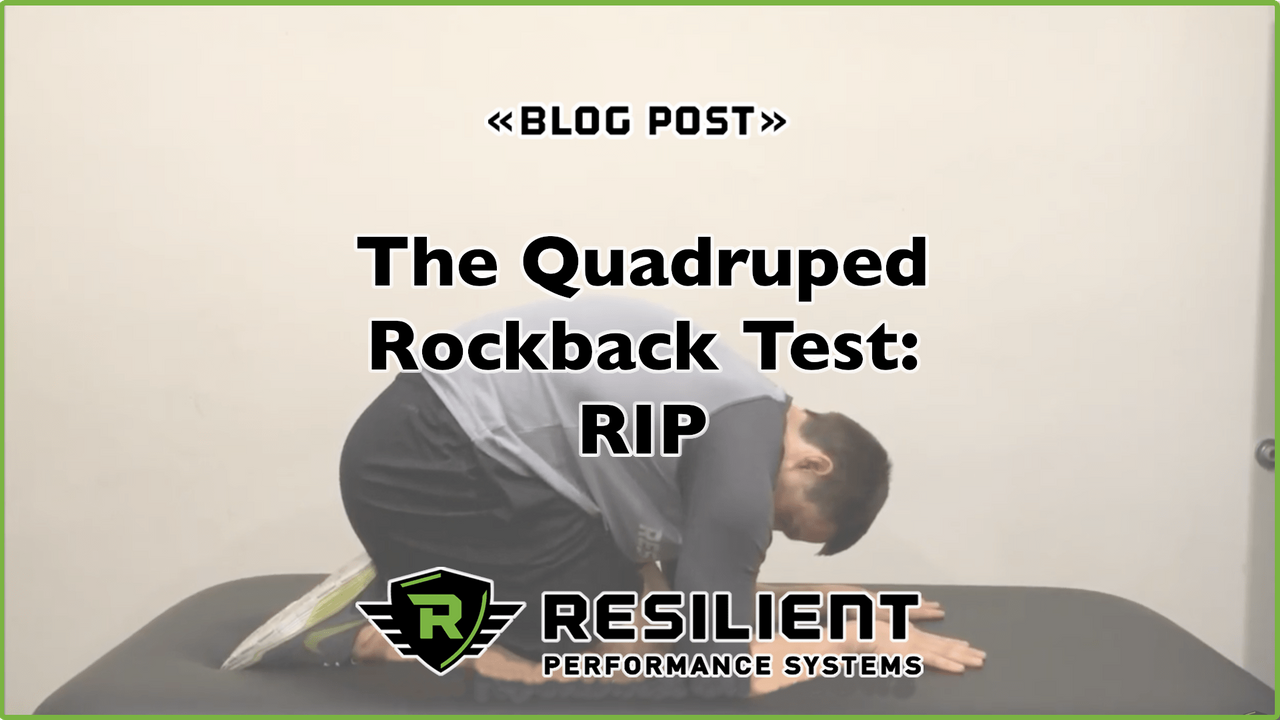
The Quadruped Rockback Test: RIP
If you don’t feel like reading the entire article and just want the bottom line on the quadruped rockback test, I give you Michael Scott, Regional Manager of Dunder Mifflin Paper Company (Scranton Branch):
https://www.youtube.com/watch?v=31g0YE61PLQ
This test is supposed to help determine someone’s ideal squat depth and stance width based upon when his/her lordosis visibly reverses during quadruped “rocking”. Assuming the test actually achieved this end, is the individual supposed to levitate into a standing position with a barbell and squat from said depth and stance width? The rockback test is an example of assessing something for the sake of assessing something despite its disconnect from the actual task. The rockback test doesn’t account for motor control influences in standing that influence hip and lumbopelvic mechanics. The placement of the feet on the ground during an actual squat sufficiently changes the context in a way that renders the rockback test obsolete. Additionally, the presence of external load, as typically occurs during the squat exercise, is also pertinent.
An athlete who aces the rockback test might not necessarily perform as admirably during an actual squat even with a submaximal load. The reverse is also true. Some people seem to move “better” (bring the pitchforks movement nihilists) with additional load. If not the rockback test then what?
- Clear the requisite joints involved in the squat using whatever methodology you deem appropriate. A continuing education acronym Royal Rumble will occur at a later time. For example, somebody who lacks passive and/or active flexion and internal rotation of the hip will likely reverse his/her lordosis earlier and more prominently in a squat all other things being equal. Find a way to restore that flexion and internal rotation provided there isn’t an anatomical constraint. The rockback test can be overly fatalistic in dismissing limited squat depth as a structural problem. Even if the test’s construct validity were high, who’s to say the results couldn’t change with a targeted intervention? A poor rockback test result is not necessarily suggestive of a “Scottish Hip” or meaningful femoral acetabular impingement as the popular narrative suggests. To be clear, everybody “buttwinks” in a squat. It’s just not always visible. Avoiding obvious buttwinking in a loaded squat is reasonable, though it is probably more a matter of degree than drawing an absolute line.
- Actually squat with a barbell or whatever implement you care to use and tinker with the stance and depth until you fulfill your objective. Specificity wins here. The rockback test is a proxy, and not a very good one, for something we can observe directly. Moreover, squat depth can improve over time when people…practice squatting.
Cue continuing education acronym Royal Rumble...
Freebies and exclusive promos!
We won't share your info. Unsubscribe at any time.

